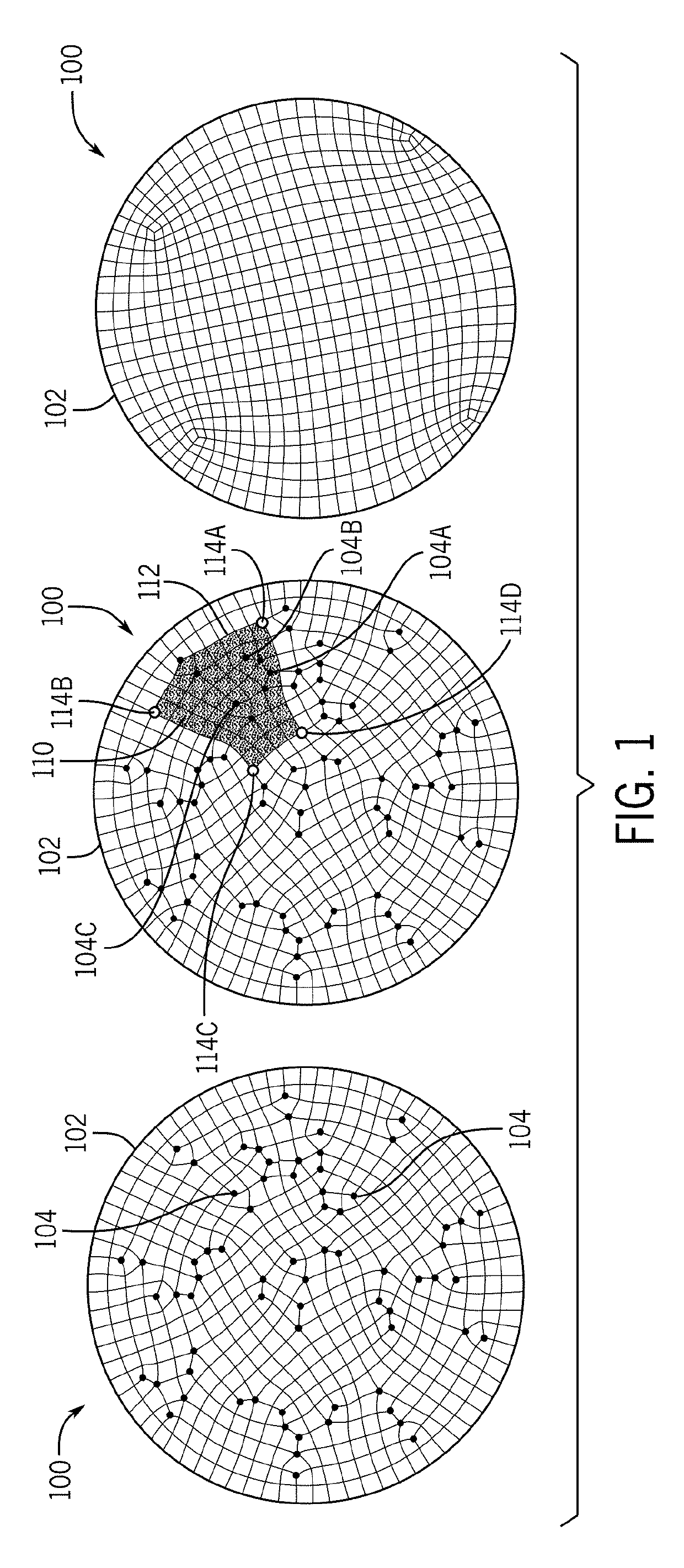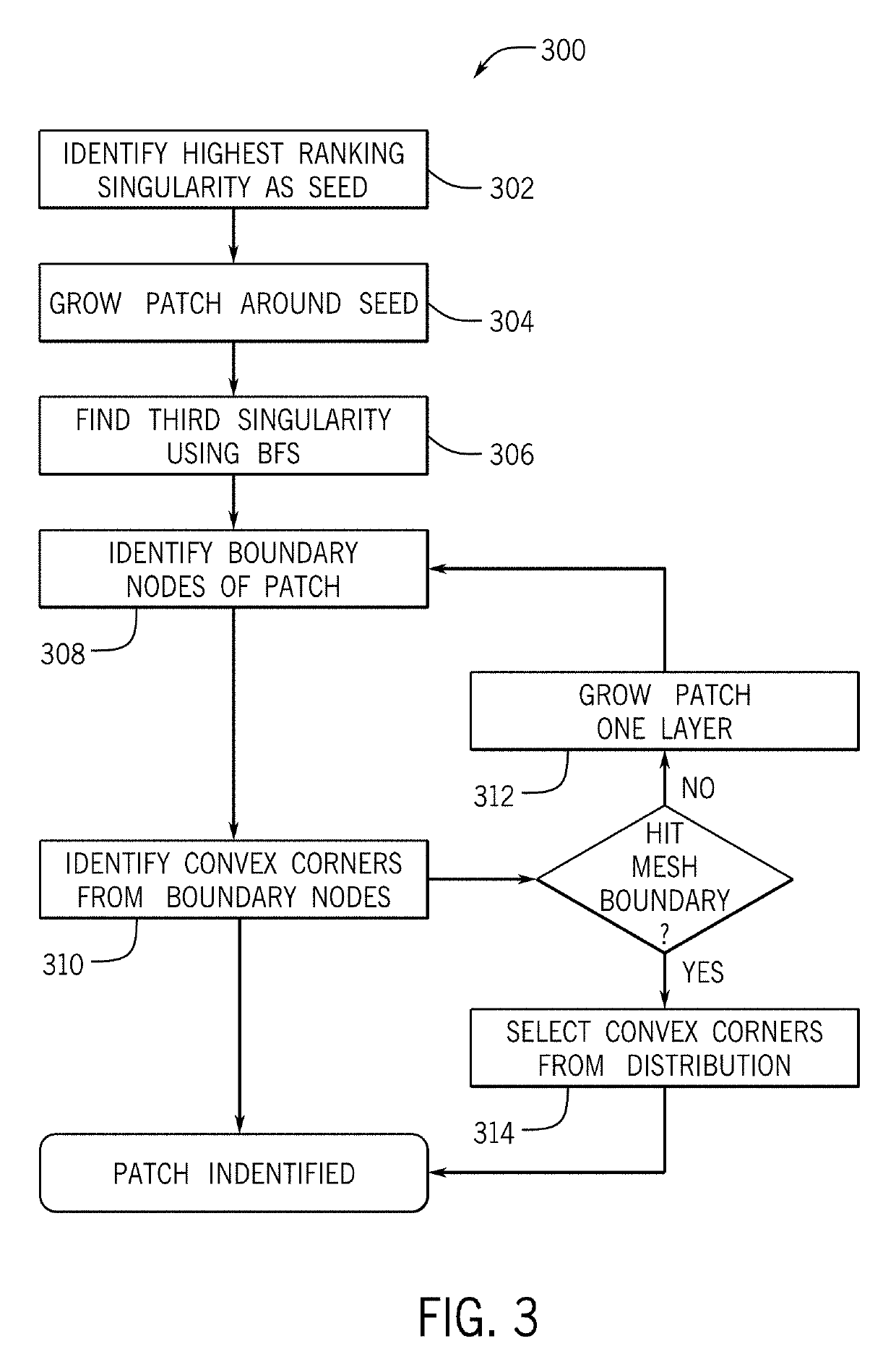Singularity reduction in quadrilateral meshes
a quadrilateral mesh and singularity technology, applied in the field of optimizing meshes, can solve the problems of low topological quality of meshes, numerical instability in computation, and mesh optimization without respect, and achieve the effect of simple and robust, and reduce singularities
- Summary
- Abstract
- Description
- Claims
- Application Information
AI Technical Summary
Benefits of technology
Problems solved by technology
Method used
Image
Examples
Embodiment Construction
[0038]Described here are systems and computer-implemented methods for modifying and generating polygonal meshes in computer graphics applications, which meshes are both geometrically and topologically optimized. Topological optimization is achieved by reducing singularities in the mesh. Generally, with reference to FIG. 1, the user provides, or the system generates a rule for ranking singularities 104 within a quadrilateral mesh 102 of an object 100 (e.g., distance of a singularity 104 from the boundary 106, role of singularity 104 in geometric distortion of the mesh 102). Thereafter, these singularities 104 are sorted and incrementally removed as follows. At least three singularities 104 are needed to participate in the removal process; this leads to the idea of exploiting “patch,” which is a well-known structure in mesh generation in various contexts. The present disclosure uses a patch 110 as a subset of the mesh 102 containing at least three singularities 104A-C. Starting with t...
PUM
 Login to View More
Login to View More Abstract
Description
Claims
Application Information
 Login to View More
Login to View More - R&D
- Intellectual Property
- Life Sciences
- Materials
- Tech Scout
- Unparalleled Data Quality
- Higher Quality Content
- 60% Fewer Hallucinations
Browse by: Latest US Patents, China's latest patents, Technical Efficacy Thesaurus, Application Domain, Technology Topic, Popular Technical Reports.
© 2025 PatSnap. All rights reserved.Legal|Privacy policy|Modern Slavery Act Transparency Statement|Sitemap|About US| Contact US: help@patsnap.com



